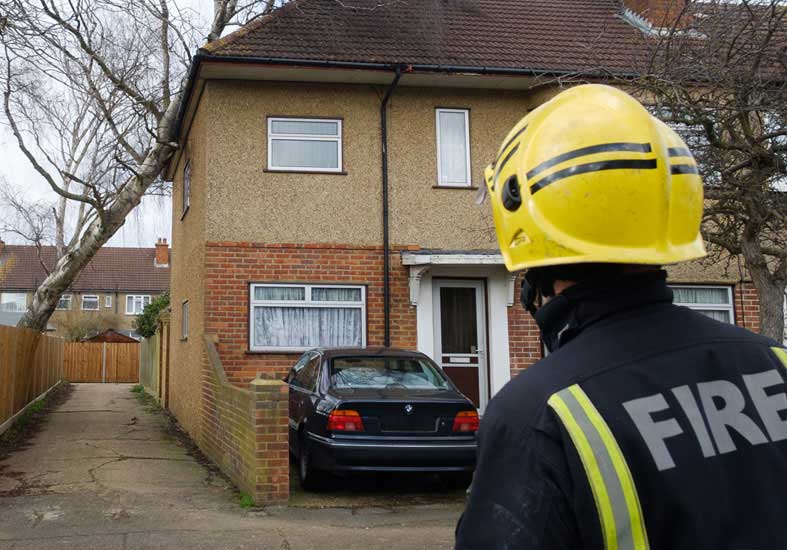If you rent out a property or are responsible for managing rented properties on a landlord's behalf, here's an overview of the fire safety areas you need to be aware of.
Landlords are required by law to have at least one smoke alarm installed on every floor of their properties and a carbon monoxide alarm in any room containing a solid fuel burning appliance (eg a coal fire, wood burning stove). You must also make sure the alarms are in working order at the start of each new tenancy.
However, London Fire Brigade strongly recommend an additional heat detector in the kitchen, and a smoke alarm in the lounge and hallway of individual flats and houses to give early warning to residents.
There's a useful booklet that explains what's required on gov.uk here.
Fire doors stop the spread of heat and smoke in the event of a fire.
Without this vital fire protection residents won't be able to evacuate when necessary due to smoke logging and high temperatures in escape routes.
Poor adjustment of self closing devices or inappropriate choice of closer type can cause fire doors to close very quickly and bang, disturbing residents. To stop this, residents wedge fire doors open to stop the door fully closing and banging. This can weaken the door closing device and stop the door from properly closing, making the door less effective at stopping the spread of fire.
You need to:
Find out more on the fire doors for property managers page.
Fire protection and fire stopping to service risers, and between individual flats, corridors and the means of escape routes prevents the rapid spread of fire throughout blocks of flats – and is essential.
Unfortunately, this is often breached when utility companies (gas, electricity, TV cabling etc) run new services between flats, or between common parts and flats. In our experience these breaches are often not resealed correctly with fire resisting material/stopping to maintain the fire protection.
Tenants storing belongings in communal areas can pose a real risk to safety. Items can accidentally be set alight, or be set alight deliberately. In the event of fire items in hall ways and on stairs can stop people escaping, and stop firefighters doing their job.
You need to:
The Fire Safety Order stipulates that risk assessments should be reviewed if any material change is planned within an occupied building. This includes changes to compartmentation arrangements, refurbishment and redecoration works particularly if these works affect the common parts of the building.
You will need to:
If, for any reason, you feel that your property may not comply with Building Regulations and the Fire Safety Order, the emergency plan and evacuation strategy for the building needs to be changed and you should provide tenants with appropriate advice about the evacuation strategy and actions to be taken.

Keeping your tenants safe – and yourself within the law – starts with your Fire Risk Assessment and Emergency Plan. Find out more and get started.